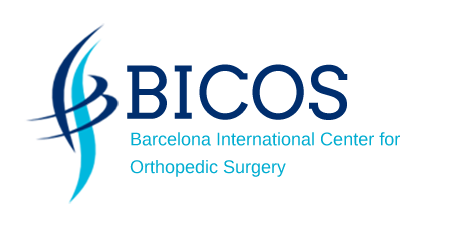Shoulder Arthroscopy

In shoulder arthroscopy, small incisions (cuts) are made in the area of your shoulder. Doctors insert special tools and an arthroscope through these incisions to do the procedure. An arthroscope is a long metal tube with a light, camera, and a magnifying lens at the end. During this procedure the problems within your shoulder are seen and fixed. After repairing your shoulder joint, you may be able to wear your shoulders without pain or trouble.
AGREEMENTS ABOUT YOUR CARE:
You have the right to participate in the planning of your care. To assist in this planning; you should find out about her health and how she can be treated. This way, you and your doctors can talk about your options and decide what care to use during your treatment. You always have the right to refuse treatment.
RISKS:
GETTING PREPARED:
The week before the procedure
- Ask a family member or friend to drive you home after your procedure. Do not drive yourself home.
Ask your doctor if you need to stop taking any of your current medications. This includes aspirin, ibuprofen, and blood thinners. Ask your doctor before using any over-the-counter medications and herbal medications or supplements. If you regularly use these medications or supplements, tell your doctor.
Tell your doctor if you know or think you are pregnant. You may need blood tests, x-rays, and other tests. Check with your doctor for more information on these tests and other tests you may need. Enter the date, time, and location of each test.
The night before the procedure
- Remove any nail polish.
You can be given a pill to help you sleep.
Ask your doctors for directions for eating and drinking.
The day of the procedure
- Write down the correct date, time, and location of your procedure.
If you will be staying in the hospital after your procedure, bring your personal belongings with you. This includes your bathrobe, toothbrush, toothbrush, and slippers.
Ask your doctor before taking any medications on the day of your procedure. These medications include insulin, diabetes pills, heart pills, aspirin, or blood thinners. Bring all the medications you are taking, including the vials, to the hospital.
Do not wear contact lenses on the day of your procedure. You can wear your glasses. Wear socks to help keep you warm.
Caregivers will insert an intravenous (IV) tube into your vein. A vein in your arm is usually chosen. Through the IV you will be given medicine and fluids.
An anesthesiologist will talk with you before your procedure. This doctor will give you medicine to put you to sleep during your procedure. Tell your doctor if you or someone in your family has had problems with anesthesia in the past.
You will be asked to sign a legal form (informed consent). This gives your doctor permission to do the procedure. If you are unable to consent, someone with authorization can sign this form for you. Before giving your consent, make sure that all your questions have been answered so that you understand what is going to happen.
TREATMENT:
What to expect
- You will be asked to change your clothes for a hospital gown. Medicines may be given to relax or make you sleepy. You will be taken in a wheelchair or stretcher to the room where the procedure will be done. General and / or local anesthesia will be applied to keep you completely pain free during the procedure. Doctors can check your shoulder by moving your arms in different directions and compare both shoulders. You can be placed on your side or in a beach chair position. Your shoulder, arm, chest, and neck will be cleaned with soap and water and covered with sheets. Your arm will stay in traction (weighted apparatus) if you are on your side.
Caregivers will make an incision (cut) in your shoulder and put fluid into your joint. Your doctor will use an arthroscope to look inside your shoulder. Other incisions will be made in different places around your shoulder. Your healthcare provider will insert other small instruments through this incision to repair or remove tissue from your shoulder joint. The incisions will be closed with stitches and wrapped with a bandage. Your arm will be placed in a sling to prevent your shoulder from moving and healing.
After the surgery:
They will take you to a room where you will stay until you wake up and then they may allow you to return home. If you are staying in the hospital, you will be taken back to your room. Do not get out of bed without your doctor's permission. A bandage will be used to cover your incision. This bandage will keep the surgery area clean and dry to help prevent possible infection. Shortly after surgery, a paramedic will remove the bandage to check the incision.
Waiting Room:
Your relatives will stay in this room until you are ready to receive visits. If your family members need to leave the hospital, they should leave a phone number where they can be called in case of need.
GET IN TOUCH WITH YOUR DOCTOR IF:
- You cannot make it to your appointment on time.
You have a fever (increased body temperature).
You have an infected wound or skin infection near your injured shoulder.
You have questions or concerns regarding your procedure.
LOOK FOR MEDICAL ATTENTION IF:
- The problem for which you are having arthroscopy gets worse.
You have a lot more pain or trouble moving your shoulder.



